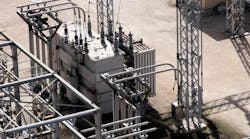Entergy, based in New Orleans, with $12 billion in annual revenues is pivoting to a new business future in its second century of business. The Energy Times recently sat down for an extended interview with Andrew “Drew” Marsh, the utility’s executive vice president and chief financial officer. This is the second of a three-part series of articles based on that interview. To listen to the entire interview, please visit this online site.
Energy Times: Entergy is planning to retire its Pilgrim nuclear plant in Massachusetts by 2019 and its FitzPatrick nuclear plant in New York by early 2017. What is your nuclear strategy going forward?
Marsh: We think about our four key stakeholders - our owners, customers, employees, and our communities. When you make the decision to turn off a nuclear plant, it certainly impacts all four of those in a big way. As far back as 2007, we were looking at spinning off our merchant power nuclear business into a separate entity. Ultimately we weren’t successful. But that laid out our strategic intent and it hasn't really changed over that period.
Marsh: There would be three separate companies. There would be a merchant business, and there would be a transmission business with a merger with ITC. And there would be the utility that's still here in the middle south of United States. All three of those would be in very different places.
Energy Times: As one of America's leading nuclear power generators, with the world focused on climate change, how can the nuclear power option be more attractive given the low cost of natural gas powered generation?
Marsh: Natural gas prices are a product of a much larger macro commodity environment. That’s just going to continue to be a struggle for nuclear plants. There are other policy elements and market elements that could certainly be beneficial. In the absence of all three, it's going to be very hard for nuclear plants to compete in a merchant environment versus a retail regulatory environment.
Energy Times: What is the main difference between merchant nuclear units and units dedicated to providing power to its utility owner?
Marsh: The nuclear plants within our utility business all are well-situated to continue to run, prosper and contribute to the whole power system for years to come. They are part of a different kind of a business model than the merchant assets. Merchant assets have to generate revenue from a wholesale market as opposed to retail customers. When you have to rely on the market, the market has to acknowledge the benefits of nuclear power and that doesn’t happen in the merchant space today.
Energy Times: New York state is pursuing its REV changes to promote distributed generation and efficiency – and they want you to maintain FitzPatrick. Entergy says it is losing $60 million a year because of the low price of gas. How do you deal with that? What do you tell Gov. Andrew Cuomo?
Marsh: We've certainly had conversations with the state for months now. We certainly would prefer to keep the plant open. That’s always been an objective. But we can't be blind to the economic reality that the facility faces.
READ MORE



